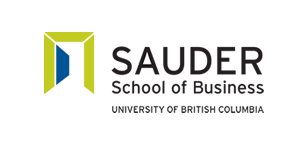Because bias is a leader's Achilles' heel.
And good people still have bias.
Unconscious Bias Workshops
Due to the current surge of demand, we are prioritizing requests that are part of the creation or implementation of an equity, diversity or inclusion strategy, or part of an effort to reduce discriminatory forms of bias in recruitment or selection processes. See Unconscious Bias Online Training & Virtual Workshops for more information.
FOR MANAGERS AND RECRUITERS
Understanding what implicit bias is and how it impacts our decisions is key to fostering more inclusive and intercultural workplaces, practices and leadership.
Bias is personal, cultural and institutional.
Most often it is invisible to those who have it. The reality is that we all have bias, and our unconscious is more powerful than you think. The good news is that there are ways to offset and disrupt implicit on a personal and social level, procedural and systems level, and eventually on a structural level.
This workshop focuses on the implicit attitudes or stereotypes that shape how we engage others and make decisions in the workplace.
The session provides an understanding of how bias is formed in our unconscious, and specifically focuses on four kinds of unconscious bias in the workplace:
Affinity bias;
Confirmation bias;
Social comparison bias; and
Attribution error.
Using the Harvard Implicit Association Tests, the workshops facilitates a self-examination of a variety biases that influence how we interact and behave around various groups of people.
+ See a Sample of Full-Day Diversity & Inclusion Training for how Unconscious Bias fits with other related content.
+ See a Unconscious Bias Online Training & Virtual Workshops for how we’re delivering this training during the COVID-19 pandemic.
Dovetailing the inclusive leadership and intercultural skills workshops, the unconscious bias workshop examines how implicit attitudes and stereotypes result in subtle forms of prejudice and undermine managers' effectiveness in fostering inclusion and recruiting diversity.
Most importantly, this session looks at the research and proven methods of disrupting and counteracting bias:
On a personal level;
For a board or committee;
At an organizational level; and
In workforce recruitment.
This session also provides an introduction to institutional bias: the ways that an organization's systems, policies or institutional habits prevent and, in some cases, filter out the diversity that many organizations are aiming to recruit or advance into leadership roles.
BOARD DEVELOPMENT
Unconscious bias training is key to fostering inclusive board practices and developing inclusive leadership, prior to or concurrent to efforts to recruit diversity.
Boards include:
Vancity Nominations & Elections Committee
Opera.ca (Boards from across Canada & US)
LEARNING OBJECTIVES
Using examples, stories and research, this workshop aims to empower attendees to:
Define unconscious bias;
Identify the impact of unconscious bias in the workplace;
Identify and use strategies for disrupting or reducing unconscious bias.
What if we don't have budget?
Not having adequate budget to tackle bias is no longer an excuse. Below are recommended resources that don't require a D&I budget:
Look at Google's employee presentation on how to spot unconscious bias at work
Read: Blindspot: Hidden Biases of Good People by Anthony Greenwald and Mahzarin Banaji
Read: Everyday Bias: Identifying and Navigating Unconscious Judgments in Our Daily Lives by Howard J. Ross
Listen to: How To Fight Racial Bias When It's Silent And Subtle by NPR
We’re recruiting now and need help right away. What can we do?
Below is a list of promising practices that have worked to disrupt bias in all kinds of decision-making situations:
Acknowledging we all have bias
Use diversity of perspectives to counter bias
Slow things down (move decisions from System 1 to System 2 decision making)
Reduce your vulnerability to bias
Consistent exposure to non-stereotypical messages (see msn.com “Stunning photos of women doing 'men's work' shatter gender stereotypes“)
Seeking feedback (our biases are visible to people around us)
Implementing structured recruitment processes that limit or remove bias (see below)
Strategies that Disrupt Implicit Bias in Recruitment (Cheat Sheet)
I’m asked for this this slide so often, that I’ve decided to just put the handout online. The following is a visual version of the above list, but specific to moving towards a bias-free recruitment process. The key is to reduce vulnerability, check your attitude and mindfulness, make important subjective factors transparent (such as, “likeability”, which — lets face it — is still an important factor to hiring), and use structure to interrupt the places where bias will have an impact (the questions, who asks the questions and keeping scoring to yourself).








